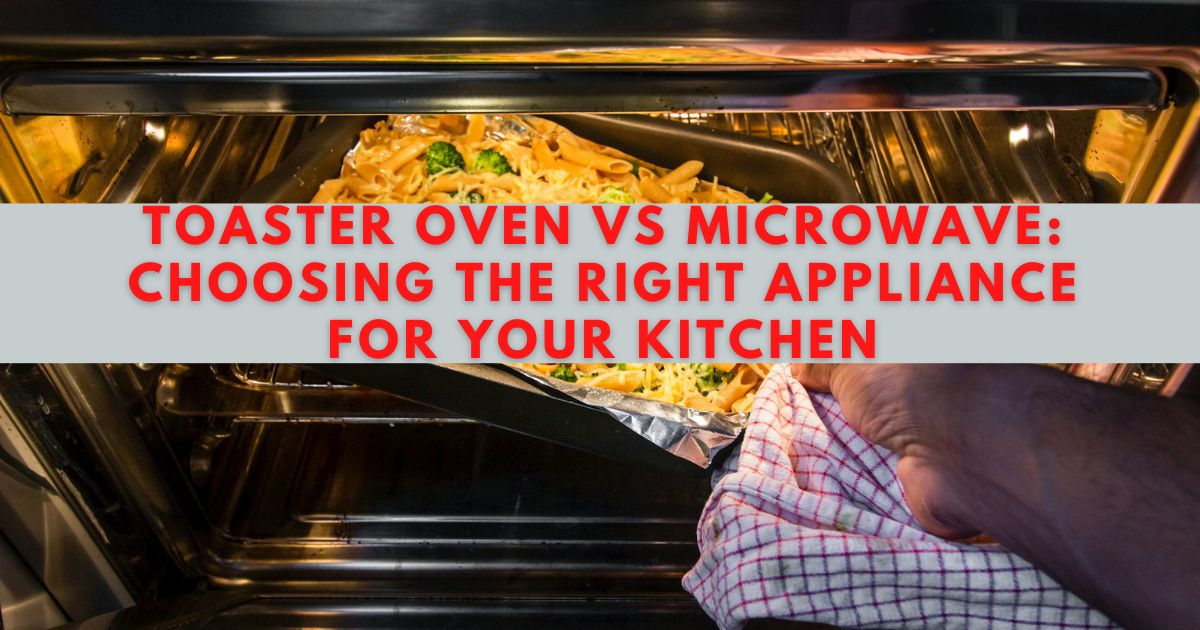When deciding on the best appliance for your kitchen, the choice between a microwave and a toaster oven often comes into play. These appliances offer different advantages for cooking and heating food. A microwave is known for its speed and efficiency; it uses electromagnetic radiation to heat food quickly from the inside out. This makes it a convenient option for those who need to warm up a meal in a matter of minutes.

On the other hand, a toaster oven applies direct heat and is more akin to a smaller version of a traditional oven. It excels at tasks such as toasting bread, baking small batches of baked goods, or even roasting vegetables. While it may cook food slower than a microwave, it can impart a crispy texture that a microwave typically cannot achieve.
Each appliance has its own set of benefits suited to different culinary tasks. For instance, a microwave uses less energy than a toaster oven and is cost-effective for short heating durations. Meanwhile, the toaster oven offers more versatility in cooking techniques but requires more time and energy. Therefore, understanding the capabilities and limitations of a microwave and a toaster oven is crucial for consumers looking to make an informed decision that best suits their lifestyle and cooking preferences.
Table of Contents
Comparing Cooking Technologies
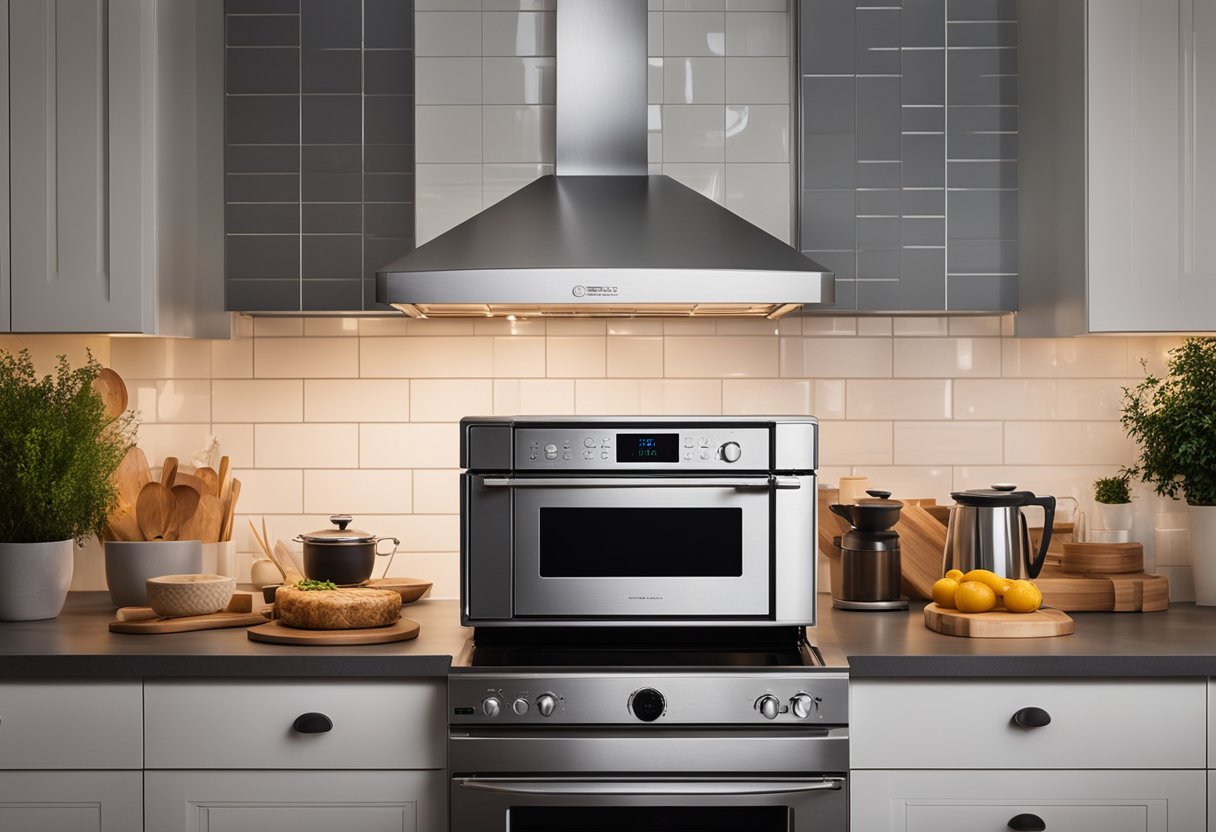
When choosing between microwave and toaster ovens, consumers consider factors like cooking speed, energy usage, and space efficiency. These aspects vary greatly between the two appliances.
Microwave Ovens: How They Work
Microwave ovens use electromagnetic waves to vibrate water molecules in food, thereby generating heat and cooking the food from the inside out. This method is particularly efficient for reheating food and is capable of defrosting items quickly due to the penetration of microwave radiation.
Toaster Ovens: Operation and Functions
Toaster ovens employ heating elements that produce infrared radiation to cook and toast food. The direct heat allows toaster ovens to excel in tasks like toasting bread and baking small batches of baked goods, giving them a crispy exterior that microwaves cannot achieve.
Differences in Cooking Processes
The principal contrast in cooking processes between the two is that microwaves are best for rapid cooking and reheating, while toaster ovens are better suited for baking, toasting, and crisping food. Toaster ovens generally cook food slower than microwaves but provide more even cooking and browning capabilities.
Size and Kitchen Footprint
Considering size and kitchen footprint, microwave ovens typically have a smaller countertop footprint but a larger interior, making them suitable for cooking larger items. Toaster ovens, although they may occupy more counter space, offer variable sizes ranging from compact to nearly full-oven size.
Energy Considerations
Energy efficiency is a critical point of comparison. On average, microwaves use around 925 watts, whereas toaster ovens use about 1225 watts. Consequently, microwaves are approximately 20% more energy efficient than toaster ovens, an important consideration for those mindful of energy consumption.
Ease of Use and Maintenance
In terms of maintenance, toaster ovens often require regular cleaning to remove crumbs and food residue. You can clean it with a simple sponge or paper towel. Microwaves, on the other hand, normally need just a quick wipedown with a damp cloth, making them arguably more easy to clean.
Safety and Health Factors
Safety and health factors are paramount. Microwave ovens must be used with caution, as certain flammable materials and inappropriate containers can cause fires or health hazards. Toaster ovens, while safer in terms of radiation, also require attention to prevent burns and safely handle the heating elements.
Assessing Functionality and Versatility
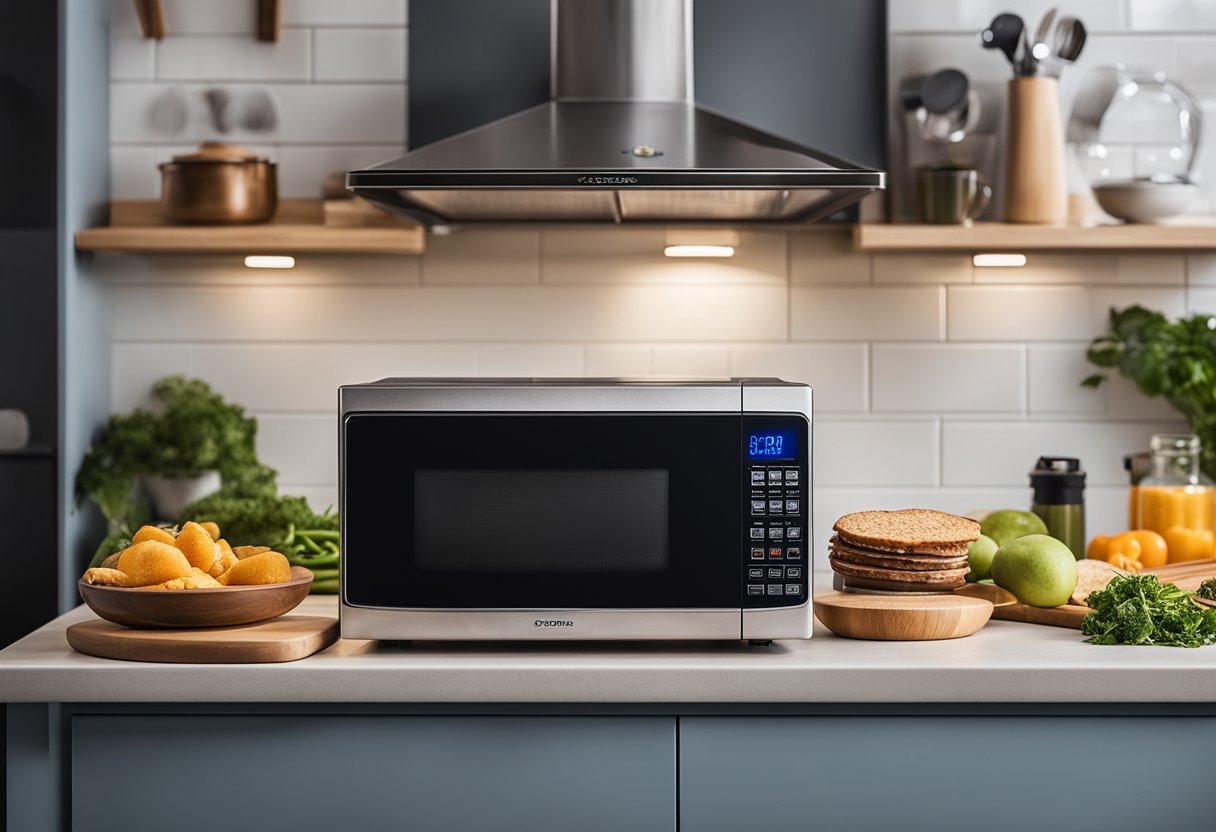
When choosing between a microwave and a toaster oven, it is crucial to consider their capabilities in defrosting, reheating, and various forms of cooking. These factors are pivotal in determining the right appliance for your kitchen’s needs.
Defrosting and Reheating Capabilities
A microwave is typically superior in terms of defrosting and reheating speed and convenience. It utilizes electromagnetic waves that cause water molecules in food to vibrate, creating heat. This process allows microwaves to swiftly reheat soups and stews or defrost items without much wait time. Toaster ovens may defrost and reheat as well, but generally, they take longer and may not distribute heat as evenly.
Baking and Roasting Efficiency
Toaster ovens are often favored for their baking and roasting abilities, which more closely resemble traditional ovens. With built-in baking and roasting functions, toaster ovens utilize convection technology to surround food with hot air, promoting even cooking and reducing cooking time. Microwaves, while capable of baking and roasting, may not achieve the same level of browning and crisping that a convection feature in toaster ovens can provide.
Toasting and Browning Proficiency
The toasting and browning quality of a toaster oven is typically more proficient than that of a microwave. A microwave may not be capable of toasting bread to a crisp as effectively due to its mode of heating. Toaster ovens are designed with specific functions for toasting and browning bread, making them an excellent choice for achieving a perfect toast. Features like a crumb tray also enhance their convenience for toasting applications.
Cost and Value Considerations
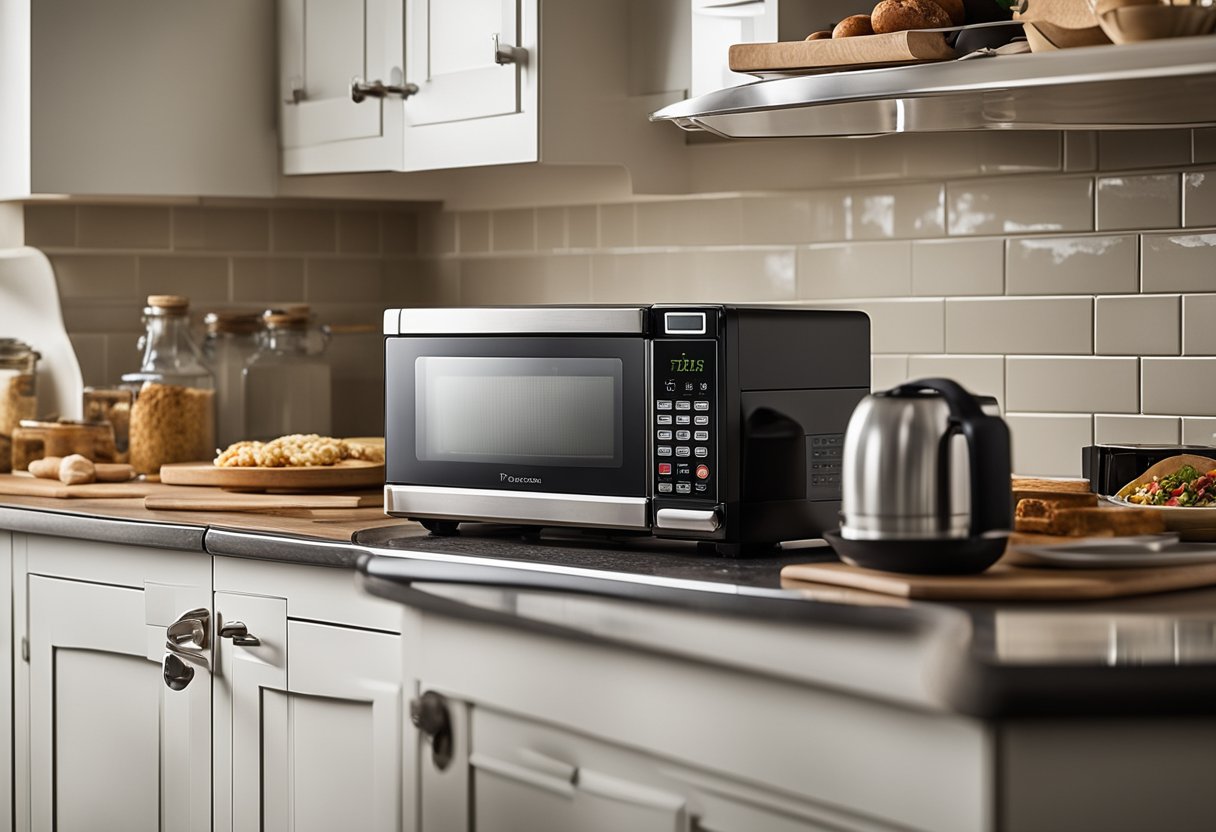
When choosing between microwave ovens, toaster ovens, and traditional ovens, you should carefully evaluate the price range, long-term expenses, and differences between the countertop and traditional models. It is crucial to consider not only the upfront cost but also the ongoing operational cost of energy efficiency and maintenance demands.
Price Range and Initial Costs
Microwave ovens typically span a cost spectrum from approximately $50 to $300, with cost variations depending on size, power, and added features. Toaster ovens can similarly range from $50 to $170 for a standard countertop model, offering functions such as toasting and baking. On the other hand, traditional built-in or freestanding electric ovens often start at a higher price point due to their larger size and capacity, with prices commonly ranging from $400 to upwards of $2000.
Long-Term Operational Expenses
Operating costs over time are heavily influenced by energy efficiency per appliance. Toaster ovens are generally more energy-efficient for small meal preparations due to their smaller size and quicker heating times. Microwaves excel in efficiency by heating food quickly and consuming less electricity compared to both toasters and traditional ovens. The maintenance costs remain relatively low for countertop models; however, if a traditional oven requires professional repairs, the maintenance costs can escalate.
Countertop vs. Traditional Models
Countertop models, such as microwaves and toaster ovens, are valued for their space-saving designs and generally lower initial costs. In contrast, traditional ovens, whether mounted or standalone, are often perceived as long-term investments for more extensive culinary needs. The installation process for traditional ovens can also contribute to additional costs, whereas countertop appliances are typically ready to use out of the box.
Selecting the Right Appliance for Your Needs
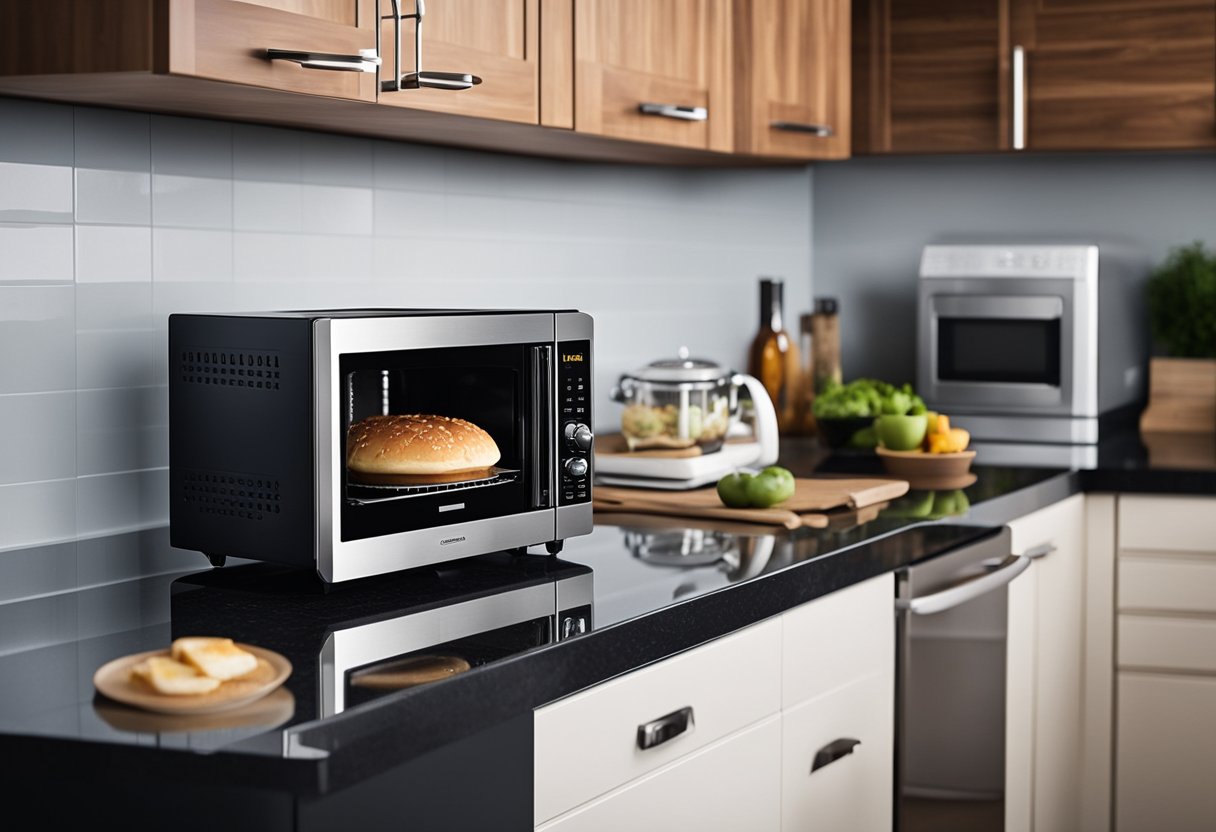
When choosing between a microwave oven, a toaster oven, and a conventional oven, one must consider their kitchen requirements, the features of each appliance, and the advantages and disadvantages they offer.
Evaluating Kitchen Requirements
Before purchasing any kitchen appliance, one must assess the available countertop space. Countertop space affects whether a toaster oven or a microwave oven can be accommodated alongside other kitchen appliances. Additionally, wattage requirements should be evaluated to ensure compatibility with existing electrical circuits.
Comparison of Key Features
- Temperature Range: Toaster ovens often have a wider temperature range useful for various cooking methods, from toasting to baking.
- Fan: Many toaster ovens come with a convection feature, which includes a fan for even heat distribution.
- Wattage: Microwave ovens typically use a higher wattage, leading to faster cooking times at the expense of less surface browning when compared to toaster ovens.
Understanding these features helps in determining the convenience and versatility of the appliance.
Pros and Cons of Each Option
| Appliance | Pros | Cons |
|---|---|---|
| Microwave Oven | Fast heating, defrosting capability | Limited browning, less suitable for baking |
| Toaster Oven | Versatile, greater browning, and crisping | Slower heating, can require more counter space |
| Conventional Oven | Best for large meals and baking | Takes up significant space and, often less energy-efficient |
Each kitchen appliance possesses unique advantages and disadvantages that cater to different cooking needs. It is essential to weigh these against personal cooking preferences and tasks commonly performed in the kitchen.
Frequently Asked Questions
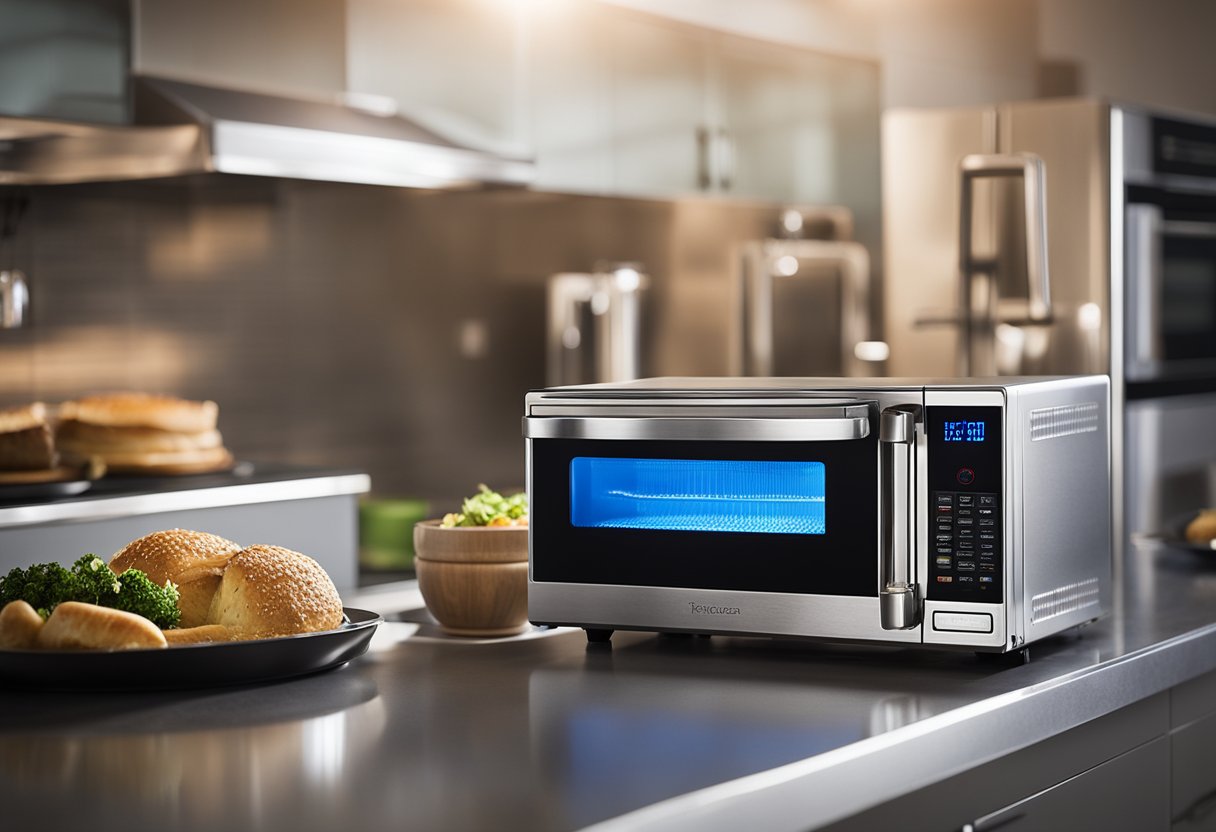
When choosing between a toaster oven and a microwave, consumers often have questions regarding health implications, energy consumption, cooking quality, and safety concerns related to radiation emissions. These frequently asked questions address those key topics.
What are the health implications of using a toaster oven compared to a microwave?
Using a toaster oven as opposed to a microwave may affect nutrient retention in food, as the cooking methods differ. Toaster ovens cook by radiating heat, which can produce a more even cooking environment, while microwaves heat food by causing water molecules to vibrate, which can sometimes unevenly cook or overcook food, potentially affecting its nutritional profile.
How does the electricity consumption of a microwave compare to that of a toaster oven?
In terms of energy efficiency, microwaves generally consume less electricity compared to toaster ovens. They cook food faster and more efficiently by only heating the food itself, not the entire cooking compartment, which can lead to energy savings over time.
Is there a difference in cooking quality between a toaster oven and a microwave?
Cooking quality can vary between a toaster oven and a microwave. Toaster ovens are better suited for browning and crisping foods due to their method of heat application, while microwaves can cook food more quickly but may not achieve the same textural results.
Can you explain the difference in radiation emissions between toaster ovens and microwaves?
Toaster ovens use heating elements and emit a low level of non-ionizing radiation, similar to a conventional oven. Microwaves use a specific frequency of microwave radiation to heat food, which is contained within the appliance and is also non-ionizing. Both appliances are designed to meet safety standards when used correctly.
Conclusion
When deciding between a microwave and a toaster oven, you should consider their cooking preferences, time constraints, and energy efficiency desires.
- Microwaves offer speedy cooking times and are excellent for reheating food or preparing quick meals. They use less energy for heating small amounts of food and don’t require preheating.
- Toaster ovens provide superior browning and crisping capabilities. They are better suited for baking, toasting, and other cooking tasks that benefit from direct heat.
It’s also important to note that the cost of these appliances can vary, although it is generally comparable when considering similar quality models. The decision might not solely rest on the initial price, but also on the long-term energy savings and the types of food one intends to prepare.
- Toaster ovens excel at tasks like:
- Toasting bread or bagels
- Baking small batches of baked goods
- Broiling open-face sandwiches
- Microwaves are often chosen for:
- Reheating leftovers
- Cooking frozen meals
- Steaming vegetables
Appliance efficiency can be a deciding factor, as some individuals prioritize energy savings. One should consider how often they will use the appliance and for what purposes.
In summary, each appliance has its strengths, and the right choice depends on an individual’s specific cooking needs and kitchen habits.

